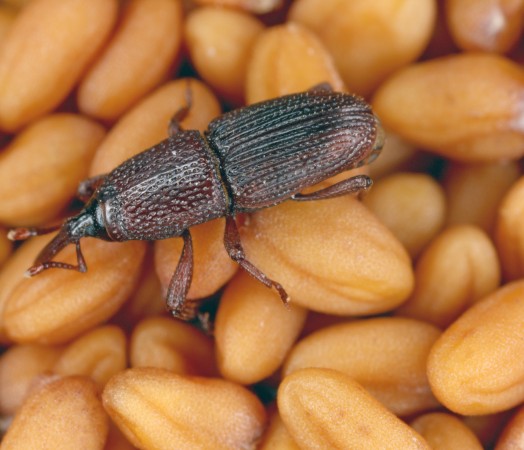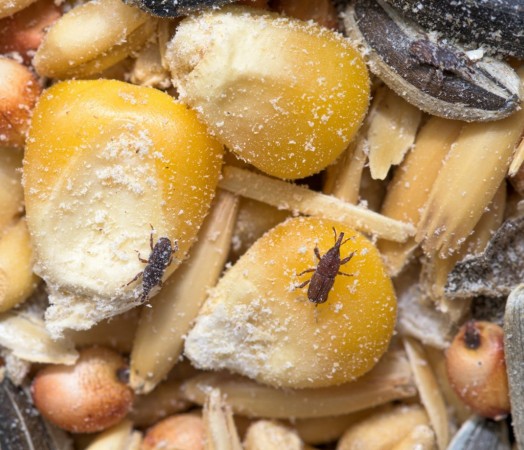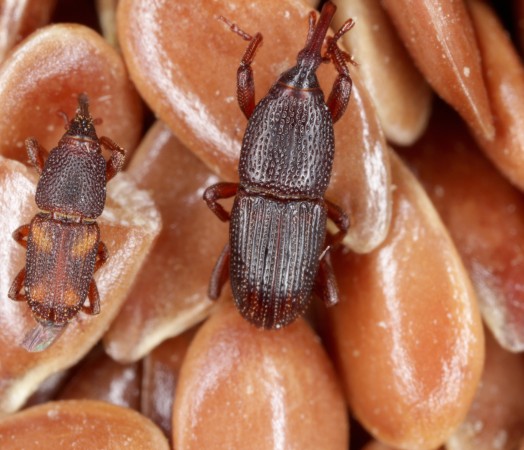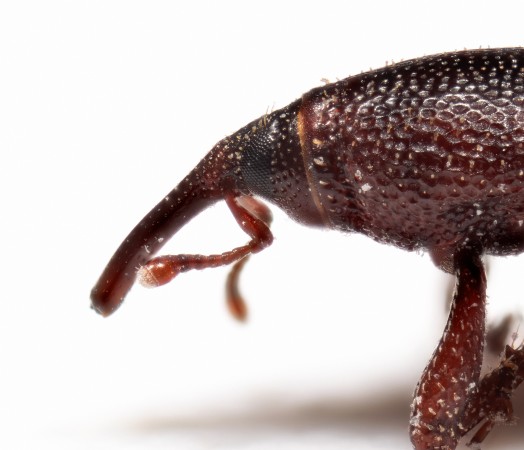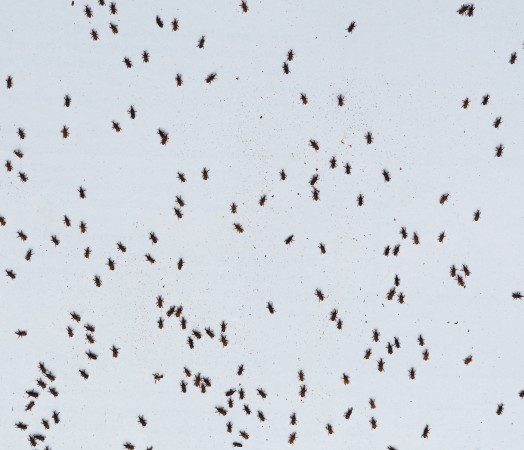Weevils in grain- what to do
Wednesday 20th January 2021
Given time, weevil can completely destroy large quantities of stored grain. Here is some information if you have had a rejection for weevil, if you have a suspicion you might have weevil in grain or if you just want to prevent getting weevil in grain in the future
Many farmers, food manufacturers or grain merchants use “weevil” as a catch-all term for bugs in grain that cause rejections. In reality weevils make up a small proportion of the large number of insect pests called stored product insects (SPIs).
What makes weevil different?
- For a start, the grain weevil is the only SPI which is indigenous to the UK. Most of the other insects that infest stored grain have come from off-shore and really got a foothold in the country when bulk grain shipping really took off in the 1950s and ‘60s
Nevertheless, all of these foreign origin insects are now here in the UK so why should we care that the grain weevil is the only one with UK origins?
Well, their origins matter because they have adapted to our colder climate. Most other grain bugs have quite high minimum breeding temperatures which has significant implications for their ability to breed in grain.
As soon as the grain gets into store, the first aim is to get the grain temperature down to 15C. There is something to be said about how hard this is because to get to 15C, you need the ambient air to be consistently 11C or lower to get grain temperature this low. Sometimes in summer and autumn, the night temperatures just aren’t low enough to get there easily.
Once there however, you have reached a temperature which makes the grain an essentially hostile atmosphere for the breeding of grain insect pests. If they have been able to breed a bit before you get down to this temperature then the low temperature won’t kill them, it just means they won’t be able to increase in number.
Weevil, on the other hand, are adapted to our climate and so they have a much lower minimum breeding temperature which is around 11.7C. This means that ambient air temperature must be consistently around 7.7C to be able to get the grain temperature down this low.
According to the Met Office data for 2019 and 2020 from the NIAB weather station, temperatures didn’t get down this low until October and November respectively. That’s a massive four to five months of time from harvest with warm grain in store during which the weevil would be able to multiply.
- It’s not all bad news. Weevils are much slower breeders than all of their other SPI cousins. Take sawtooth grain beetle for instance, each mated female can lay 400 eggs under ideal conditions. Psocids have massive breeding potential, with one mated female giving rise to 1000s of offspring.
Weevil on the other hand, can only lay around 40 eggs per mated female, so the rate of increase is somewhat slower.
They are very much the steady Eddie of the grain bug world. Usually, weevil need to be active in or around the store before filling to get a really successful infestation going. That is why it is so important to get your grain stores properly cleaned and treated before harvest and pheromone traps should be placed around the store before it is filled.
- Weevils do their growing INSIDE of the grains they are infesting.
The weevil mother finds a grain which will sustain her offspring. She will then bore a hole into the grain and lay an egg inside. Once the egg is in, she will cover the hole with a waxy secretion that comes from the end of her abdomen. The egg is then free to hatch out inside the grain as a larva which can eat, grow, and develop inside the infested grain free from predation and detection. The larva will then pupate and hatch again as a fully formed adult, boring out of the grain and leaving the tell-tale holes in the grains which is often the first thing a diligent grain inspector notices in weevil infested grain.
This matters to us because it makes weevils very hard to kill. All contact insecticides do against weevils is kill off the adults, the eggs and larvae remain untouched. If the insecticide is residual there is often not enough left to deal with the emerging adults once the first generation have been killed off. Retreatments of contact insecticides for weevil infestation are quite common in our experience.
Really, the only option available for weevil infestation is fumigation. It is the only treatment that is penetrative enough to get to the developing eggs and larvae inside the grains and it is the only treatment which is effective against all life stages of the insect, eggs and pupae included.
- Fumigation on its own is not enough, however.
This is the old argument about treating symptoms vs treating the cause. Other fumigation companies will act like firefighters. They will come out, extinguish the fire, and then go merrily about their day. Dealey technicians treat the problem differently. We will get to the root cause of why you had weevils in the first place and arm you with enough information so that you won’t be calling us net year with exactly the same problem.
So, if you have had a rejection for weevils, have your suspicions that weevil might be in your grain, or just have weevil worries then please get in touch with the fumigation team using the button below.
Also feel free to send us grain samples. We will be able to assess if there are any weevils in the samples free of charge for your peace of mind.

